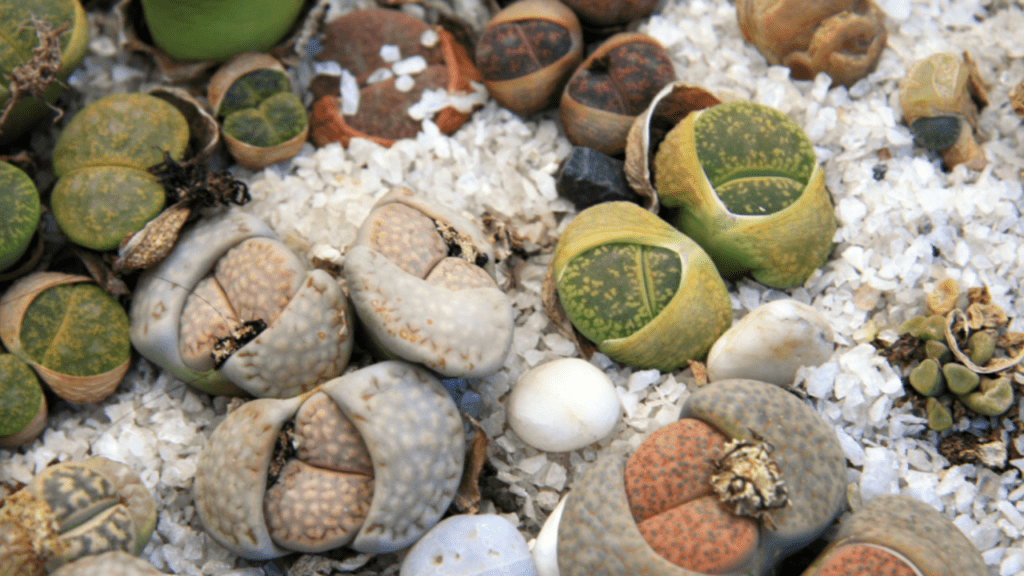
Ultimate Guide to Growing and Caring for Lithops Plants
Are you ready to become a successful Lithops plant owner? Look no further, because this ultimate guide has everything you need to know to grow and care for these unique and fascinating plants. Whether you’re a beginner or a seasoned plant enthusiast, this comprehensive guide will provide you with all the information you need to ensure your Lithops thrive and flourish. From proper watering and sunlight exposure to soil and potting requirements, we’ve got you covered. So let’s dive in and make your Lithops plant journey a successful and fulfilling one!
Table of Contents
ToggleWhat are Lithops Plants?
Definition and origin
Lithops plants, also known as living stones or pebble plants, are a type of succulent that is native to the deserts of Southern Africa. These unique plants have evolved to blend in with their rocky surroundings, making them look like small stones or pebbles. Their ability to mimic their environment helps them avoid being eaten by animals and protects them from the harsh desert conditions. Lithops are known for their striking appearance and are popular among plant enthusiasts for their unusual and beautiful foliage. These fascinating plants are a great addition to any succulent collection and are relatively low maintenance, making them an ideal choice for both beginners and experienced plant owners. With the right care and attention, you can enjoy the beauty of these remarkable plants in your own home.
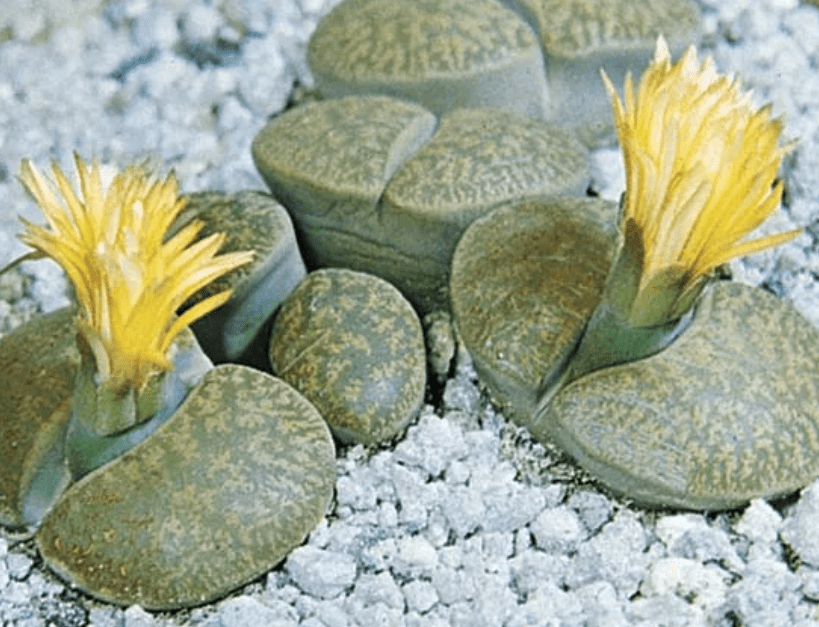
Unique characteristics
Lithops plants, also known as living stones or pebble plants, are truly one of a kind. Their ability to mimic their environment and blend in with their surroundings is a fascinating adaptation that sets them apart from other plants. Their appearance is striking and unique, with their foliage resembling small stones or pebbles. This makes them a captivating addition to any succulent collection and a great conversation starter for plant enthusiasts. Their origin in the deserts of Southern Africa gives them a resilient and tough nature, making them a perfect choice for those looking for low-maintenance and exotic plants. Their unique characteristics and stunning appearance make them a must-have for anyone looking to diversify their plant collection. Embrace the beauty and intrigue of Lithops plants and add a touch of the extraordinary to your home.
Natural habitat
Lithops plants, also known as living stones or pebble plants, are truly one of a kind. Their ability to mimic their environment and blend in with their surroundings is a fascinating adaptation that sets them apart from other plants. Their appearance is striking and unique, with their foliage resembling small stones or pebbles. This makes them a captivating addition to any succulent collection and a great conversation starter for plant enthusiasts. Their origin in the deserts of Southern Africa gives them a resilient and tough nature, making them a perfect choice for those looking for low-maintenance and exotic plants. Their unique characteristics and stunning appearance make them a must-have for anyone looking to diversify their plant collection. Embrace the beauty and intrigue of Lithops plants and add a touch of the extraordinary to your home.
Benefits of Growing Lithops Plants
Aesthetic appeal
Lithops plants, also known as living stones or pebble plants, are truly one of a kind. Their ability to mimic their environment and blend in with their surroundings is a fascinating adaptation that sets them apart from other plants. Their appearance is striking and unique, with their foliage resembling small stones or pebbles. This makes them a captivating addition to any succulent collection and a great conversation starter for plant enthusiasts. Their origin in the deserts of Southern Africa gives them a resilient and tough nature, making them a perfect choice for those looking for low-maintenance and exotic plants. Their unique characteristics and stunning appearance make them a must-have for anyone looking to diversify their plant collection. Embrace the beauty and intrigue of Lithops plants and add a touch of the extraordinary to your home.
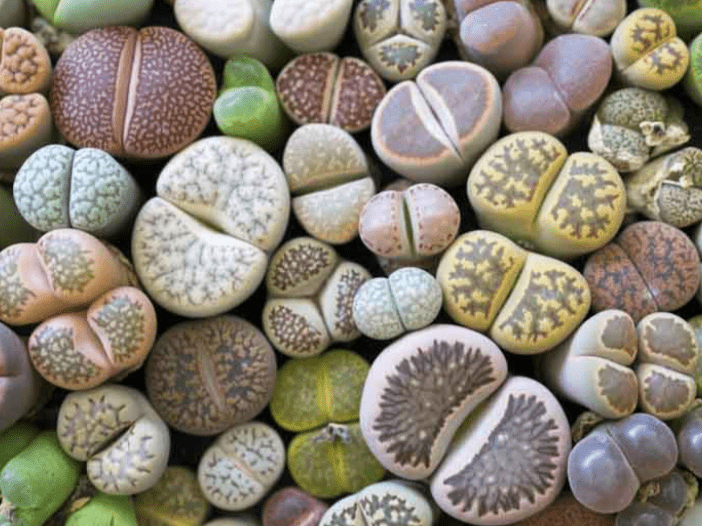
Low maintenance
Is another great benefit of growing Lithops plants. These unique succulents require very little care and attention, making them perfect for busy individuals or those with a hectic schedule. They have adapted to survive in harsh desert conditions, so they are able to go for long periods without water, making them ideal for those who may forget to water their plants regularly. Their low maintenance nature makes them a hassle-free addition to any garden or indoor plant collection. With just a little bit of sunlight and occasional watering, these plants can thrive and continue to add beauty to their surroundings. So if you’re looking for a plant that requires minimal effort but provides maximum aesthetic appeal, look no further than the stunning and low-maintenance Lithops plants.
Conversation starter
Are you looking for a unique and fascinating addition to your home or garden? Look no further than the incredible Lithops plants! These extraordinary succulents not only add a touch of beauty and intrigue to any space, but they are also incredibly low maintenance. Whether you have a busy schedule or simply forget to water your plants regularly, the resilient nature of Lithops makes them the perfect choice. These plants have adapted to survive in harsh desert conditions, so they can go for long periods without water, making them ideal for those who may not have the time to constantly tend to their garden. With just a little bit of sunlight and occasional watering, these plants can thrive and continue to add beauty to their surroundings. So why not embrace the beauty and uniqueness of Lithops plants and start a conversation with friends and visitors? They are sure to be impressed by these stunning and low-maintenance plants.
Choosing the Right Lithops Plant
Different species of lithops
Include Lithops aucampiae, Lithops karasmontana, and Lithops optica. Each species has its own unique color, shape, and pattern, making them a fascinating addition to any collection. With their ability to mimic the appearance of surrounding rocks, these plants are truly a marvel of nature. Whether you prefer the vibrant colors of Lithops aucampiae or the intricate patterns of Lithops optica, there is a species of lithops that is sure to capture your interest. These plants are a great way to add a touch of natural beauty to your home or garden, and with their low-maintenance nature, they are perfect for both experienced and novice gardeners. So why not explore the world of lithops and discover the unique beauty of each species? You are sure to be captivated by their charm and elegance.
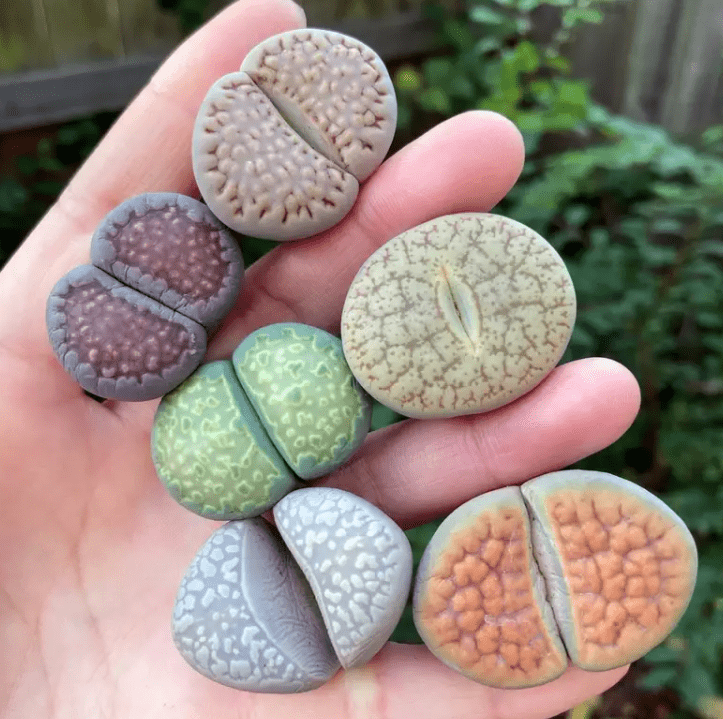
How to select healthy lithops plants
When selecting a lithops plant, it’s important to look for signs of good health. First, check the color of the plant. A healthy lithops should have vibrant, green or bluish-grey colored leaves. Avoid plants with yellow or brown discoloration, as this could indicate disease or poor health.
Next, examine the texture of the leaves. They should be firm and plump, not wrinkled or shriveled. This is a sign of proper hydration and overall health.
Additionally, look for any signs of pests or damage. A healthy lithops plant should be free of pests and have no signs of nibbling or blemishes on the leaves.
Lastly, choose a plant with a well-established root system. This can be indicated by a firm and well-filled pot, with no signs of root rot or overcrowding.
By following these tips, you can ensure that you select a healthy and vibrant lithops plant to add to your collection. With proper care and attention, these unique and beautiful succulents can thrive and bring joy to any space.
Where to buy lithops plants
If you’re looking to add some unique and beautiful lithops plants to your collection, there are a few places you can consider. One option is to check out your local plant nurseries or gardening stores. They may have a variety of lithops plants for you to choose from. Another option is to look online, as there are many reputable plant sellers and nurseries that offer a wide selection of lithops plants for sale. You can also consider reaching out to succulent enthusiasts and collectors in your area, as they may have recommendations on where to find high-quality lithops plants. Whether you’re shopping in person or online, be sure to carefully inspect the plants before making a purchase. Look for healthy, vibrant lithops plants with firm and well-established root systems. By taking the time to find the right place to buy your lithops plants, you can ensure that you’re adding healthy and beautiful additions to your succulent collection.
Planting Lithops Plants
Ideal soil composition and drainage
Are essential for the health and growth of your lithops plants. When it comes to soil composition, lithops plants thrive in a well-draining mix that is low in organic matter. A mixture of coarse sand, perlite, and a small amount of potting soil is ideal for lithops. This allows for proper drainage and prevents the risk of root rot. When it comes to drainage, it’s important to ensure that your lithops plants are not sitting in waterlogged soil. To achieve this, use pots with drainage holes and avoid overwatering your plants. By providing the ideal soil composition and drainage for your lithops plants, you are setting them up for success and ensuring that they can thrive and bloom beautifully.
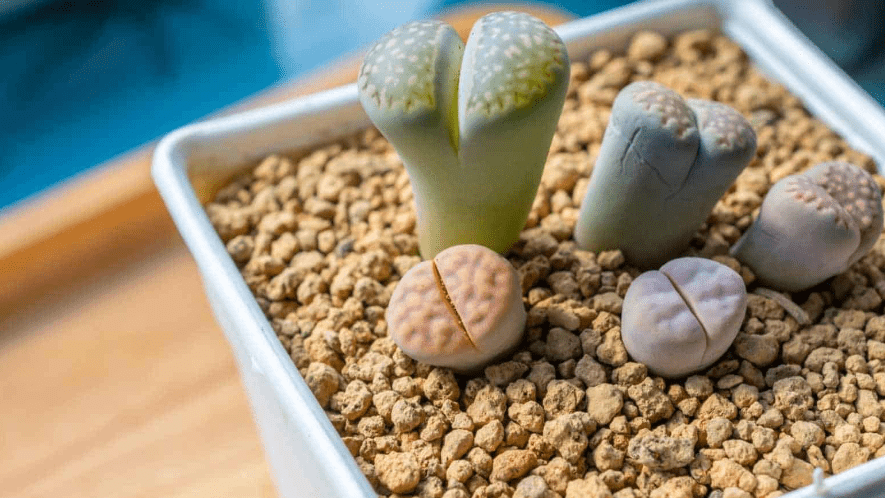
Best containers and pots
When it comes to planting lithops plants, the right containers and pots are essential for their health and growth. The ideal soil composition and drainage are crucial for the success of your lithops plants. These unique plants thrive in a well-draining mix that is low in organic matter. A combination of coarse sand, perlite, and a small amount of potting soil is ideal for lithops, as it allows for proper drainage and prevents the risk of root rot.
In addition to the soil composition, it’s important to consider drainage. To ensure the health of your lithops plants, use pots with drainage holes and avoid overwatering them. This will prevent the roots from sitting in waterlogged soil and protect the plants from potential damage.
By providing the best containers and pots with proper drainage, you are setting your lithops plants up for success. With the right soil composition and drainage, your lithops plants will thrive, bloom beautifully, and bring joy to your garden. So, take the time to choose the best containers and pots for your lithops plants and watch them flourish.
How to plant lithops
Is an important consideration for anyone looking to add these unique and beautiful plants to their garden. When it comes to soil composition, a combination of coarse sand, perlite, and a small amount of potting soil is ideal for lithops. This allows for proper drainage and prevents the risk of root rot, which can be detrimental to the health of the plants. In addition to the soil composition, it’s important to consider drainage. To ensure the health of your lithops plants, use pots with drainage holes and avoid overwatering them. Overwatering can lead to the roots sitting in waterlogged soil, which can cause damage to the plants. By providing the best containers and pots with proper drainage, you are setting your lithops plants up for success. With the right soil composition and drainage, your lithops plants will thrive, bloom beautifully, and bring joy to your garden. So, take the time to choose the best containers and pots for your lithops plants and watch them flourish.
Caring for Lithops Plants
Watering guidelines
Are crucial for the health and growth of your lithops plants. It’s important to follow proper watering guidelines to ensure that your plants thrive and flourish. Lithops plants are unique and require specific care when it comes to watering. Overwatering can lead to root rot and damage the plants, so it’s important to water them sparingly. Allow the soil to dry out completely between watering to mimic their natural habitat. Proper drainage is also essential for lithops plants, so be sure to use pots with drainage holes to prevent waterlogged soil. By following these watering guidelines, you can promote healthy growth and beautiful blooms in your lithops plants. Remember, the key to success is providing the right environment for your plants to thrive, so take the time to water them properly and enjoy the beauty they bring to your garden.
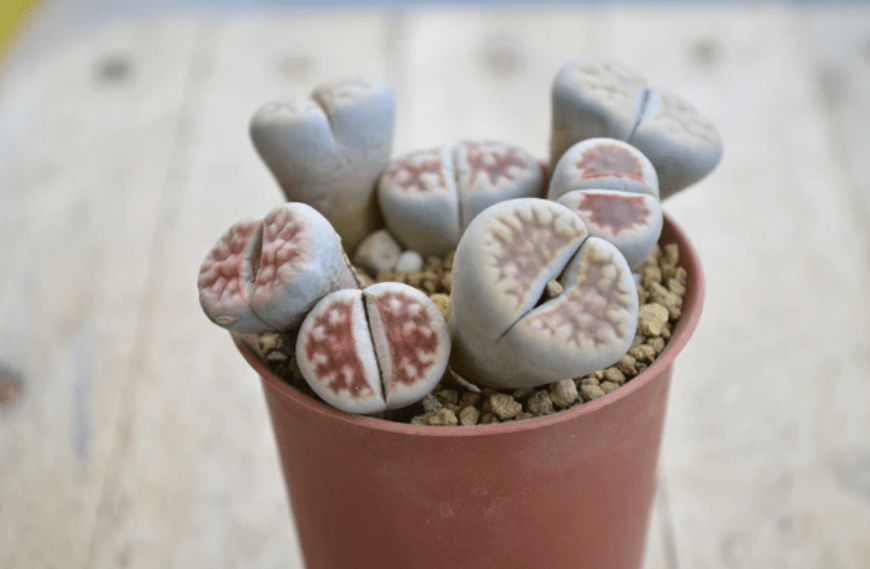
Light requirements
Are crucial for the growth and development of your plants. It’s important to understand the specific light needs of each plant in order to provide the best growing conditions. Some plants thrive in direct sunlight, while others prefer partial or full shade. It’s important to research the light requirements of your plants and place them in the appropriate location in your garden or home. Proper lighting not only promotes healthy growth, but it also affects the flowering and fruiting of your plants. If your plants are not receiving enough light, they may become leggy and weak, or they may not produce flowers or fruit. On the other hand, if they receive too much light, they may become scorched and damaged. By providing the right amount of light for your plants, you can ensure their overall health and vitality. Remember to monitor the light conditions in your garden or home and make adjustments as needed to meet the specific needs of your plants. With the proper light requirements, you can create a thriving and beautiful garden that will bring you joy and satisfaction.
Temperature and humidity needs
Are important factors to consider when caring for your plants. Different plants have different temperature and humidity requirements, so it’s crucial to research the specific needs of the plants in your garden or home. Some plants thrive in warmer temperatures and higher humidity, while others prefer cooler temperatures and lower humidity. By understanding the specific needs of your plants, you can create the ideal environment for them to flourish.
It’s important to monitor the temperature and humidity levels in your garden or home and make adjustments as needed to meet the needs of your plants. Using a thermometer and hygrometer can help you keep track of these conditions and make informed decisions about how to best care for your plants.
By providing the right temperature and humidity conditions for your plants, you can promote healthy growth and prevent issues such as wilting, leaf yellowing, and pest infestations. With the proper care, your plants will be able to thrive and bring beauty and vitality to your space. So, take the time to research and understand the temperature and humidity needs of your plants, and create an environment that will support their overall health and well-being.
Fertilizing lithops
is an important aspect of their care and maintenance. These unique succulent plants have specific nutrient requirements that need to be met in order for them to thrive. It’s important to use a balanced, slow-release fertilizer specifically formulated for succulents, and to follow the recommended dosing instructions. Over-fertilizing can lead to nutrient burn and damage to the delicate roots of lithops, so it’s crucial to use fertilizers sparingly and to avoid applying them directly onto the plant. Additionally, it’s best to fertilize lithops during their active growing season, typically in the spring and summer, and to withhold fertilization during their dormant phase in the fall and winter. By providing the right nutrients at the right time, you can ensure that your lithops remain healthy and vibrant. Remember to always do your research and consult with a knowledgeable plant care professional to determine the best fertilizer and fertilization schedule for your specific lithops. With the proper fertilization, your lithops will be able to thrive and show off their stunning and unique appearance. So, take the time to understand their specific nutrient needs and provide the care and attention they deserve.
Common Problems and Solutions
Overwatering and underwatering
Are two common issues that can affect the health of your succulents, including lithops. Overwatering can lead to root rot, while underwatering can cause the plant to become dehydrated. It’s important to find the right balance when it comes to watering your lithops. One way to prevent overwatering is to use well-draining soil and to water your lithops sparingly, allowing the soil to dry out completely between waterings. On the other hand, if you notice that your lithops are wrinkled or shriveled, it may be a sign that they need more water. In this case, you can lightly water the soil and then allow it to dry out again. By paying attention to the moisture levels in the soil and adjusting your watering habits accordingly, you can ensure that your lithops receive the right amount of water to stay healthy. Remember, it’s always better to underwater than to overwater, as lithops are adapted to survive in arid conditions. With proper care and attention, you can help your lithops thrive and flourish.
Pest control
Is crucial to the health and wellbeing of your plants. Pests can wreak havoc on your garden and cause damage to your plants if left unchecked. It’s important to stay vigilant and take proactive measures to control pests before they become a problem. One effective method of pest control is to regularly inspect your plants for any signs of infestation. If you notice any pests, take immediate action to remove them and prevent further damage. Additionally, you can use natural pest control methods such as introducing beneficial insects or using organic pesticides to protect your plants. By staying proactive and implementing effective pest control strategies, you can ensure the health and vitality of your garden. Don’t let pests take over – take control and protect your plants from harm.
Propagating Lithops Plants
Can be a rewarding and enjoyable experience. These unique and fascinating succulents are known for their ability to blend in with their surroundings and thrive in harsh conditions. If you’re interested in growing your own Lithops plants, there are a few key steps to keep in mind. First, it’s important to start with healthy parent plants that are well-established and disease-free. Next, carefully remove the offsets or “pups” from the parent plant, taking care to avoid damaging the delicate root system. Once the offsets have been separated, allow them to dry and callous for a few days before planting them in a well-draining soil mix. It’s important to provide the right growing conditions, including bright light and minimal water, to ensure the success of your newly propagated Lithops plants. With a little patience and attention to detail, you can enjoy the satisfaction of watching your Lithops propagate and thrive. So go ahead and give it a try – you’ll be rewarded with a beautiful and unique addition to your plant collection.
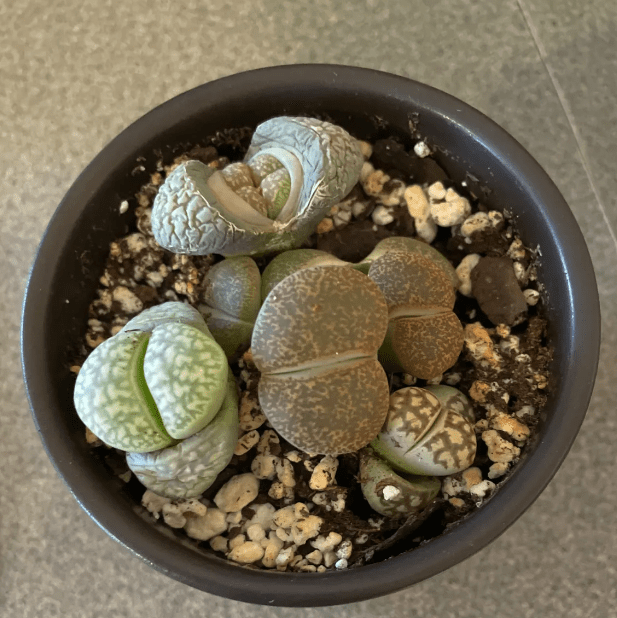
Seasonal Care Tips
When it comes to seasonal care for your plants, it’s important to adjust your care routine based on the time of year. During the colder months, it’s important to protect your plants from frost and freezing temperatures by bringing them indoors or covering them with a frost cloth. In the spring and summer, make sure to provide ample water and sunlight, while also keeping an eye out for any signs of pests or disease.
Another important aspect of seasonal care is to adjust your fertilization schedule based on the needs of your plants. During the growing season, you may need to fertilize more frequently to support healthy growth, while in the dormant season, you can reduce or stop fertilizing altogether.
By staying attuned to the seasonal needs of your plants, you can ensure their health and vitality throughout the year. So take the time to research and understand the specific care requirements for each season, and put in the effort to provide the best care for your plants. It will be well worth it when you see them thriving and flourishing in every season.
In conclusion, caring for Lithops plants is not as difficult as some may think. With the right knowledge and understanding of their specific needs, anyone can successfully grow and care for these unique plants. By following the tips and guidelines outlined in this ultimate guide, you can ensure that your Lithops plants thrive and flourish. So don’t be intimidated by their unusual appearance, with the right care and attention, you can enjoy the beauty of these fascinating plants in your own home.
Frequently asked questions And Answer
Lithops, also known as “living stones,” are a type of succulent plant that are known for their unique appearance, resembling small pebbles or stones. They are native to southern Africa and are popular for their low maintenance and unique aesthetic.
Lithops require well-draining soil, plenty of sunlight, and minimal water. They are adapted to survive in harsh desert conditions, so it’s important not to overwater them. It’s best to water them sparingly, especially during their dormant period in the winter.
Yes, you can definitely grow Lithops indoors as long as they receive plenty of sunlight. A south-facing window is ideal for providing them with the sunlight they need. Just be sure to avoid overwatering them, as they are prone to rot if their soil is too moist.
Propagating Lithops can be a bit tricky, but it is possible. They can be propagated from seeds or by division. It’s important to handle them carefully and provide the right conditions for their new growth to thrive.
Lithops do not require frequent fertilization. In fact, they are adapted to low-nutrient environments, so it’s best to use a diluted, low-nitrogen fertilizer only once or twice a year during their active growing season.
Overwatering is the most common problem when it comes to growing Lithops. They are very susceptible to root rot if their soil is too wet. It’s also important to protect them from pests such as mealybugs and aphids.
Healthy Lithops will have firm, plump leaves and show signs of new growth during their active season. They should also have a vibrant coloration and be free from any signs of pest infestations or rot.
It’s important to remember that Lithops have a unique growth cycle, with distinct periods of dormancy and growth. Understanding and respecting their natural cycle is essential for their long-term health and success in your care. With the right conditions and care, Lithops can be a fascinating and rewarding addition to your plant collection.
